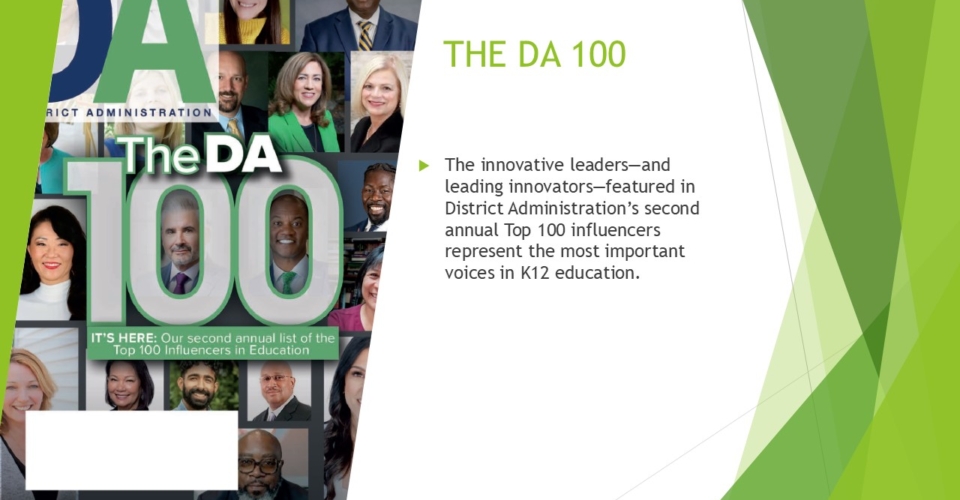When Tennessee passed legislation requiring the retention of third-grade students who did not meet English language arts proficiency standards, many districts in our state were thrown into disarray.
However, in Knox County, where we serve more than 60,000 students and 8,000 staff across a diverse range of school communities, we viewed the mandate as an opportunity—not just a requirement. Instead of scrambling to meet compliance demands, we used the moment to step back, assess our systems and reimagine how we could better support students and staff.
Meeting our obligations under the new law meant we needed more than accurate documentation—we needed consistency, transparency and solutions that could scale across 90-plus schools without placing an added burden on our staff.
What resulted was far more than compliance: we built processes that improved efficiency, strengthened equity and helped our teams focus on what matters most—student success. It’s proof that when approached with the right mindset, even mandates can spark meaningful and lasting change.
By embracing compliance not as a bureaucratic hurdle but as an opportunity to streamline operations, empower educators and reimagine what’s possible, school leaders can transform pressure into progress—and compliance into innovation.
Here are three ways our district has seen compliance catalyze innovation and improvement:
How compliance leads to data-driven decisions
Compliance requirements often serve as the catalyst for building more data-driven practices in schools. When districts are asked to collect and report on specific metrics, it naturally leads to stronger systems for tracking progress, identifying gaps and monitoring outcomes.
What begins as a mandate quickly turns into a meaningful opportunity: educators gain clearer insights, ask more strategic questions and make data-informed decisions that directly support student success.
In meeting state mandates, districts often adopt advanced data platforms and analytic tools that transform how they operate—leading to more informed decisions, stronger instruction and better student outcomes.
Compliance, then, becomes a launchpad for lasting improvement, empowering schools to move beyond reactive measures and instead create proactive, personalized, and evidence-based educational environments that truly serve all learners.
From compliance tracking to modernized workflows
Adopting the right technology can also create lasting, district-wide improvements—especially when it supports both day-to-day workflows and long-term student outcomes.
In Knox County, Tennessee, new legislative requirements around third-grade retention and student progress prompted the district to modernize how it managed documentation. With a centralized platform in place, the team created custom data tables and a tailored reporting template to track ELA proficiency, exemptions, summer school attendance, and IEPs—meeting state requirements while giving principals the clarity and confidence to make informed promotion decisions.
We also created a centralized workflow for conduct and compliance management, ensuring every incident of bullying or harassment was documented according to Tennessee law across all 90+ of our campuses.
Finally, the mandate to provide accessible student progress information led us to securely publish report cards online, eliminating costly printing and mailing while increasing access for both custodial and non-custodial parents.
What began as compliance quickly became opportunities for our district to modernize and streamline critical district operations.
Standardizing practices across 90-plus schools
By encouraging consistent standards and clear communication, compliance mandates can help unify schools across a district. In Knox County, with more than 90 campuses serving over 60,000 students and 12,290 staff members across vastly different environments—from rural areas to inner-city neighborhoods—standardizing procedures was essential.
State laws requiring uniform procedures and documentation compelled us to create district-wide practices that ensure fairness and clarity for every school community. In doing so, we created a more equitable environment where every school follows the same clear expectations—reducing confusion and ensuring fairness for students, staff, and families alike.
When expectations are consistent, parents know what to expect regardless of their child’s school, and educators can collaborate more effectively, confident they’re working within the same framework. This transparency builds trust between families and schools, making it easier for caregivers to engage and advocate for their children.
Ultimately, standardizing procedures not only helps us meet compliance but also strengthens relationships and fosters a united district committed to student success.
In Knox County, we’ve learned that compliance doesn’t have to be a hurdle—it can be a powerful catalyst for growth. By embracing mandates as opportunities to innovate, we have built systems that promote equity, efficiency, and collaboration across our diverse district.
From data-driven decisions to modern technology and consistent practices, these changes have strengthened our ability to support every student and family.
Our experience shows that when school leaders shift their mindset, compliance can transform from a burden into a springboard for meaningful, lasting progress—ensuring that every child has the opportunity to succeed.



